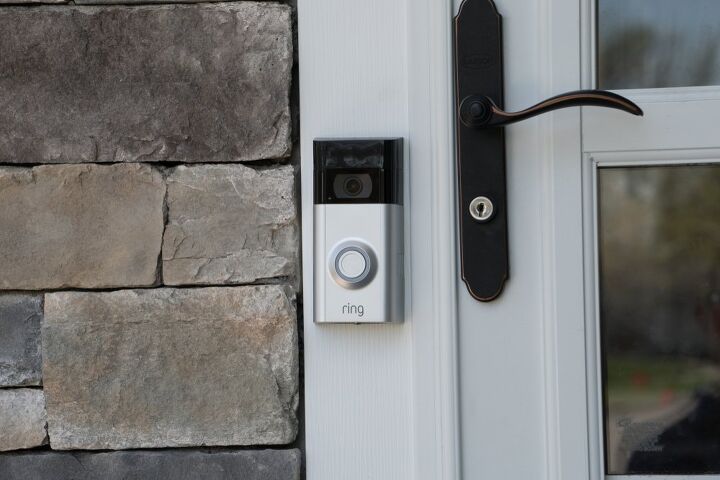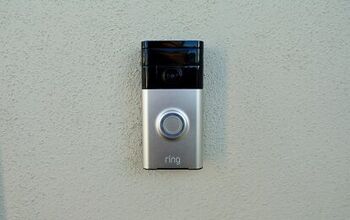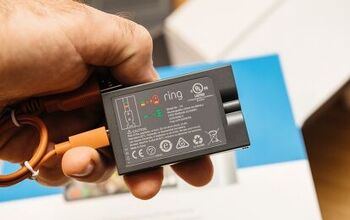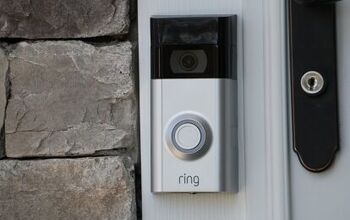Ring Video Doorbell Has Buzzing Sound? (Possible Causes & Fixes)

The Ring Video Doorbell is a wildly popular doorbell option because it combines home security with front-door alerting. However, when it starts a random buzz after only weeks or months of use, it becomes quite an unparalleled annoyance. This buzz can be in the outdoor unit itself, which is not as bad, or it can be in the home’s doorbell chime which is unbearable.
The Ring Video Doorbell buzzing sound is sometimes caused by interference in the wiring of the Ring unit. Crossed wires will cause the doorbell to buzz due to partial activation of the chime. Often buzzing is due to an underpowered transformer. A Ring doorbell wired to an old transformer will hum due to transformer wear and failure.
It is not always the fault of the home’s doorbell or transformer when the Ring unit starts buzzing. Many users report getting a replacement unit from Ring and then the problem stops. However, if the unit is past warranty or the transformer is easily accessible, this is worth investigating for a quick fix before spending time on hold with Ring.
Do You Need a Smart Home System Installation or Service?
Get free, zero-commitment quotes from pro contractors near you.

Check the Ring Doorbell Wiring and Screws
The first and easiest thing to check when the interior door chime starts buzzing is the Ring unit. This is the part that receives manual interaction, so it is the first place to check for malfunctions.
Ring has published a list of door chimes that it is compatible with. Doorbells not on this list may need to be replaced to work with the Ring.
Here’s what you can do to troubleshoot:
- Make sure the button has not become sticky and remains partially pressed. This would cause a slight current to the door chime which may cause it to buzz on the chime plate rather than ringing. If it seems sticky, clean it with a cotton swab and isopropyl alcohol.
- Turn off the electrical circuit for the doorbell at the breaker.
- Unmount the Ring unit from the wall and make sure that plate screws are still screwed all the way into the wall. Sometimes the unit was not tightened down fully, or the weather has rattled the unit causing it to loosen and make only partial contact.
- Make sure that the wires powering the Ring unit are completely separated. If there are exposed wires touching the interior chime may ring or buzz. Ensure that the wires are fully covered with electrical tape if there is any question about the insulation. This will eliminate electrical interference that may cause the chime to buzz.
- Remount the Ring doorbell, turn on the breaker, and test it to see if it is still buzzing.
There is a possibility that having the power disconnected for a while has reset the unit which also may stop the buzzing. When the unit is powered back up it has to reboot and establish a new WiFi connection and ping the server. This could also trigger a firmware update which may solve the problem.
Troubleshooting the Issue with Your Video Doorbell
How to Test the Doorbell Transformer
The mere mention of a doorbell transformer sends many people into a panic because this is an unknown area of home maintenance for most. The majority of Ring owners would never have had to mess with an antiquated doorbell transformer because it can function when needed under normal circumstances. When someone pushes the button, the doorbell chimes.
However, now that more people are hooking up brand new Ring doorbells to existing door chime wiring and hardware, these old transformers are being required to work day in and day out, and the wear and tear eventually show up in a mysterious and annoying buzz or hum that will not stop unless the doorbell breaker is switched off.
For those who are truly afraid of taking on this project, it is wise to call an electrician. The doorbell transformer can be checked or even replaced very fast by an electrician if the owner has a new one on hand at the time of the service call. For those who are up for the DIY, and do not know how to get started, the first thing to do is buy or borrow a multimeter to test the electrical current through the transformer.
Also, do this:
- Locate the doorbell transformer. It is a metal box with two screws on the front and some wires on the back. Older models are typically a brass color, while newer ones might be silver or even black. It may be located in the doorbell box, in the attic above the doorbell, in the basement below the doorbell, near the breaker box, or in a junction box.
- Turn off the doorbell circuit at the breaker box.
- Set the multimeter dial to 120V AC.
- Visually inspect the transformer before testing. If there is any sign of bulging or heat damage such as browning or black areas, do not test it. It has failed and is a fire hazard. Leave the circuit off and replace the unit before turning the circuit back on.
- Touch one probe to each of the front screws on the transformer. This creates an electrical circuit, with the multimeter reading the amount of electricity that is passing through the loop. This is how it will diagnose the health of the transformer.
- If the transformer is reading 10V or so, then it has an old transformer with enough power to ring a traditional doorbell, but not enough for a Ring doorbell. This is very common. The transformer needs to read between 16V and 24V AC. Smaller transformers can power the Ring one, but the latest models need more power.
- If the multimeter does not show at least 16V, then the transformer will need to be replaced with a new doorbell transformer. These are easily purchased from a local hardware store and are located in the same area as the doorbells.
The reason that the Ring doorbells need more electricity is that they are engineered to trickle-charge the lithium-ion battery pack using the doorbell transformer. A normal doorbell uses no electricity until it has to physically chime. In contrast, a Ring doorbell uses electricity constantly and takes a significant draw when the motion sensors are activated frequently as well as powering the interior chime when the button is pressed.
How to Replace the Doorbell Transformer
Not all doorbell transformers are created equal, as the multimeter tests show. The receiving side is always 120V AC because that is the amount of power that comes into the home and runs through the wiring. However, not that much power is needed to power a door chime, so that power is transformed, or stepped-down to however much power is needed for a particular doorbell. This is why doorbell transformers come in various voltage outputs.
Ring doorbells need between 16V and 24V AC to ring the interior door chime and keep the lithium-ion battery pack charged. The Ring doorbell has transformer specifications in the paperwork that came with the unit. Underpowered transformers must be replaced to operate the Ring unit without buzzing.
Transformers can be purchased directly from Ring. The new transformer should come with detailed paperwork on how to install it safely. In that case, these directions should be disregarded, and the printed directions followed carefully for safety.
- Double-check that the power is off at the breaker box before touching the transformer to replace it.
- Remove the wires from the front screws on the transformer. These are the ones that operate the door chime.
- Remove the three wires from the back of the transformer. This should be a white, a black, and a green wire. Those are positive, neutral, and ground. Alternatively, there may be two black and one green wire.
- Unscrew the lock nut that holds the transformer into the junction box. Not all transformers are mounted in a junction box. Pay attention to the way that the old transformer is unmounted so that the new transformer can be remounted in its place.
- Mount the new transformer into the junction box using the lock nut.
- The black and white wire or two black wires should screw into the new transformer terminals, or they may have spring connectors that they pop into. Alternatively, the transformer has wires poking out the back. Simply match black to black and white to white and secure tightly with wire nuts. The green wire attaches to the ground screw.
- Reconnect the doorbell wires to the front of the unit.
- Turn on the circuit at the breaker box and test for function.
If replacing the transformer does not solve the buzzing problem, physically check the doorbell chime. Old doorbell clackers can get physically stuck or have corrosion after years of use. Clean the components with cotton swabs and isopropyl alcohol. Old chime boxes may need to be replaced.
Some Ring users who are still under warranty report that they received a new Ring unit and the issue was solved. Others report that they were told the unit needs a firmware update. Ring does not have any publications that address the potential reasons or solutions for this type of issue. All the current Ring owner can do is try to address obvious issues such as underpowered transformers.
Do You Need a Smart Home System Installation or Service?
Get free, zero-commitment quotes from pro contractors near you.

Conclusion
The vast majority of buzzing issues are solved by replacing the doorbell and/or the doorbell transformer so that there is enough current flowing to power the interior chime and keep the Ring doorbell charged.
Unfortunately, this means spending even more money on doorbell components to make the security package work correctly.

Hannah DeMoss has been a writer for nearly a decade. Her passion for writing began years ago has continued to grow. Her expertise at home involves furniture restoration and other small DIY tasks. When not writing, Hannah enjoys the outdoors with her husband and pups, as well as traveling.
More by Hannah DeMoss



























